 您的购物车当前为空
您的购物车当前为空
VEGFR1/FLT-1 Protein, Human, Recombinant (hFc)
一键复制产品信息Human Vascular endothelial growth factor receptor 1(VEGFR-1, FLT-1) is a member of the the class III subfamily of receptor tyrosine kinases (RTKs) and Tyr protein kinase family and CSF-1/PDGF receptor subfamily. VEGFR-1 is widely expressed in human tissues including normal lung, placenta, liver, kidney, heart and brain tissues. It is specifically expressed in most of the vascular endothelial cellsand peripheral blood monocytes. VEGFR-1 contains seven Ig-like C2-type domains and one protein kinase domain. VEGFR-1is an essential receptor tyrosine kinase and plays an important role in theregulation of VEGF family-mediated vasculogenesis, angiogenesis, and lymphangiogenesis. It is also mediators of neurotrophic activity and regulators of hematopoietic development. VEGFR-1 is a receptor for VEGF, VEGFB and PGF. It has a tyrosine-protein kinase activity. Tyrosine-protein kinase that acts as a cell-surface receptor for VEGFA, VEGFB and PGF.It may play an essential role as a negative regulator of embryonic angiogenesis by inhibiting excessive proliferation of endothelial cells and promote endothelial cell proliferation, survival and angiogenesis in adulthood. Its function in promoting cell proliferation seems to be cell-type specific. VEGFR-1 can also promote PGF-mediated proliferation of endothelial cells, proliferation of some types of cancer cells, but does not promote proliferation of normal fibroblasts (in vitro).
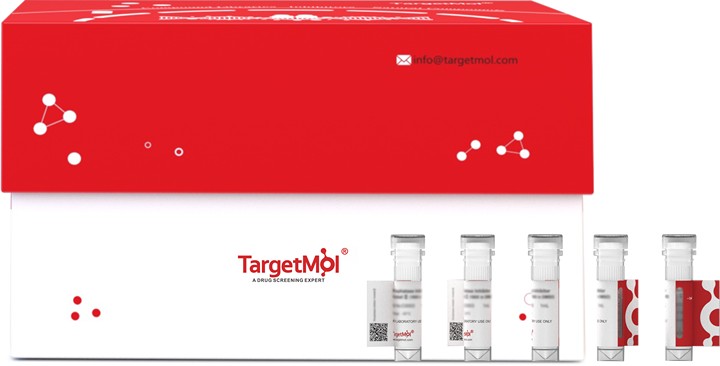
VEGFR1/FLT-1 Protein, Human, Recombinant (hFc)
一键复制产品信息| 规格 | 价格 | 库存 | 数量 |
|---|---|---|---|
| 5 μg | ¥ 432 | 3日内发货 | |
| 10 μg | ¥ 700 | 现货 | |
| 20 μg | ¥ 1,080 | 5日内发货 | |
| 50 μg | ¥ 1,970 | 5日内发货 | |
| 100 μg | ¥ 2,960 | 5日内发货 | |
| 200 μg | ¥ 4,660 | 5日内发货 | |
| 500 μg | ¥ 8,300 | 5日内发货 | |
| 1 mg | ¥ 12,600 | 5日内发货 |
产品信息
| 生物活性 | 1. Loaded Biotinylated Human VEGF165 Protein(C-6His-Avi) on HIS1K Biosensor, can bind Recombinant Human VEGFR1 (C-Fc) with an affinity constant of 10.2 pM as determined in BLI assay. (Regularly tested)
2. Immobilized Human VEGF165 at 10μg/ml (100 μl/well) can bind Human VEGFR1-Fc . The ED50 of Recombinant Human VEGFR1-Fc is 36.4 ng/ml. (Regularly tested) 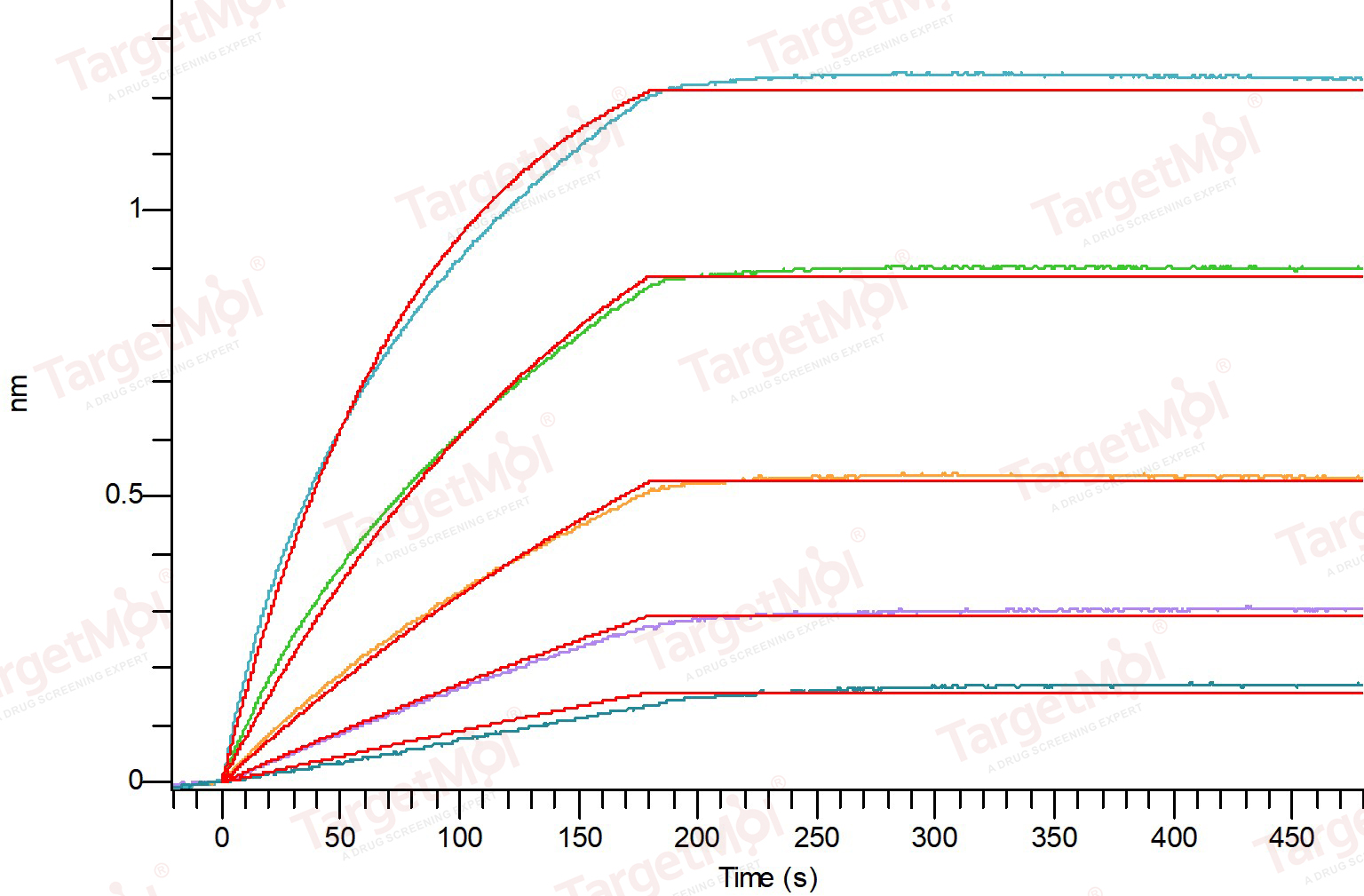 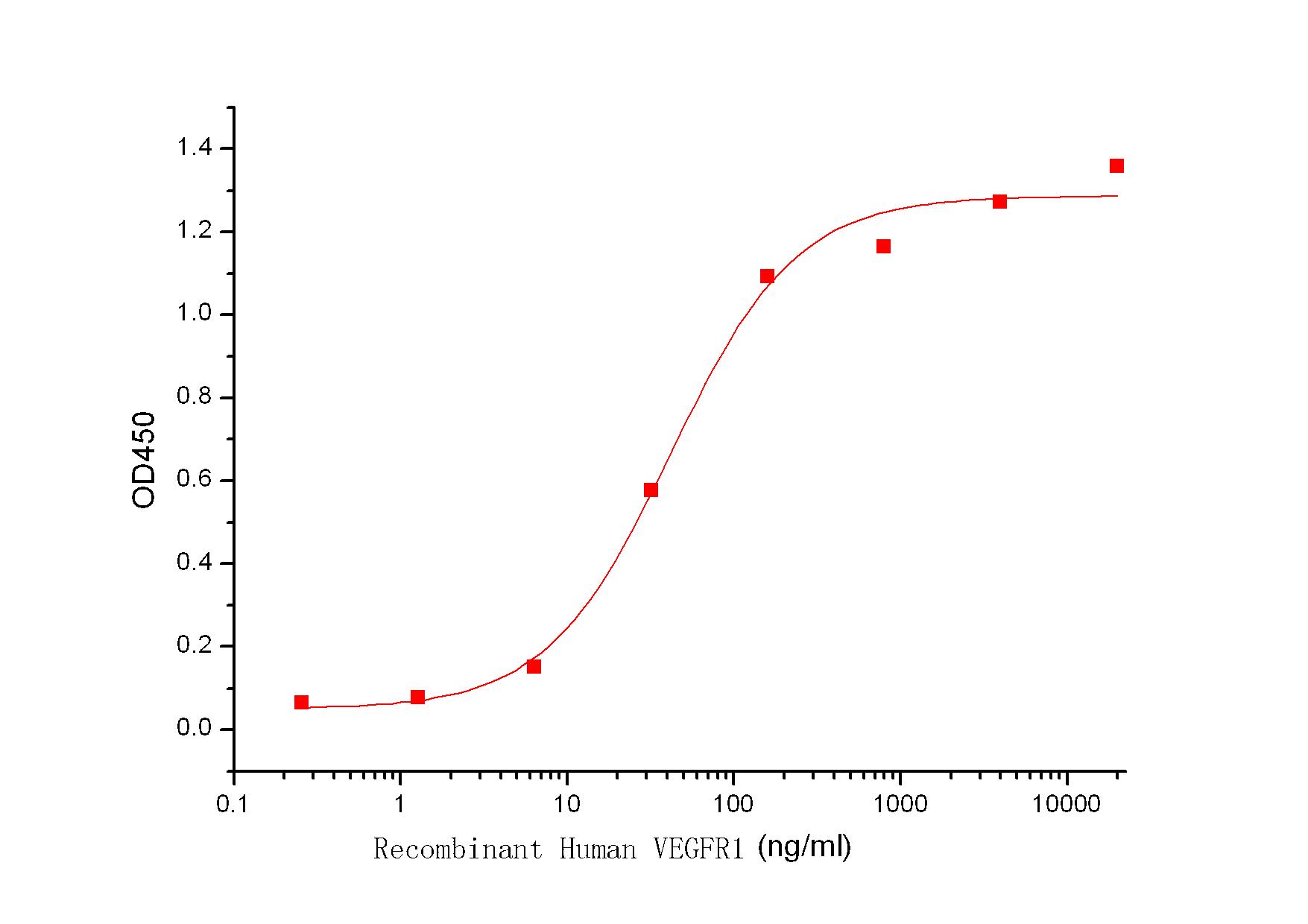 |
| 产品描述 | Human Vascular endothelial growth factor receptor 1(VEGFR-1, FLT-1) is a member of the the class III subfamily of receptor tyrosine kinases (RTKs) and Tyr protein kinase family and CSF-1/PDGF receptor subfamily. VEGFR-1 is widely expressed in human tissues including normal lung, placenta, liver, kidney, heart and brain tissues. It is specifically expressed in most of the vascular endothelial cellsand peripheral blood monocytes. VEGFR-1 contains seven Ig-like C2-type domains and one protein kinase domain. VEGFR-1is an essential receptor tyrosine kinase and plays an important role in theregulation of VEGF family-mediated vasculogenesis, angiogenesis, and lymphangiogenesis. It is also mediators of neurotrophic activity and regulators of hematopoietic development. VEGFR-1 is a receptor for VEGF, VEGFB and PGF. It has a tyrosine-protein kinase activity. Tyrosine-protein kinase that acts as a cell-surface receptor for VEGFA, VEGFB and PGF.It may play an essential role as a negative regulator of embryonic angiogenesis by inhibiting excessive proliferation of endothelial cells and promote endothelial cell proliferation, survival and angiogenesis in adulthood. Its function in promoting cell proliferation seems to be cell-type specific. VEGFR-1 can also promote PGF-mediated proliferation of endothelial cells, proliferation of some types of cancer cells, but does not promote proliferation of normal fibroblasts (in vitro). |
| 种属 | Human |
| 表达系统 | HEK293 Cells |
| 标签 | C-hFc |
| 蛋白编号 | P17948 |
| 别名 | VEGFR-1,Vascular permeability factor receptor,Vascular endothelial growth factor receptor 1,Tyrosine-protein kinase receptor FLT,Tyrosine-protein kinase FRT,Fms-like tyrosine kinase 1,FLT-1 |
| 氨基酸序列 | Ser27-Asn756 |
| 蛋白构建 | Ser27-Asn756 |
| 蛋白纯度 | Greater than 90% as determined by reducing SDS-PAGE. (QC verified) 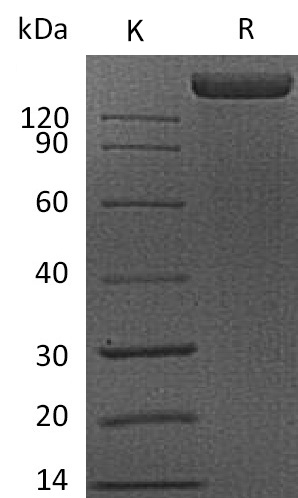 |
| 分子量 | 150-190 KDa (reducing condition) |
| 内毒素 | < 0.1 ng/µg (1 EU/µg) as determined by LAL test. |
| 缓冲液 | Lyophilized from a solution filtered through a 0.22 μm filter, containing 20 mM PB, 150 mM NaCl, 5%Trehalose, 5%Mannitol, 0.01%Tween 80, pH7.0. |
| 复溶方法 | Reconstitute the lyophilized protein in distilled water. The product concentration should not be less than 100 μg/ml. Before opening, centrifuge the tube to collect powder at the bottom. After adding the reconstitution buffer, avoid vortexing or pipetting for mixing. |
| 存储 | Lyophilized powders can be stably stored for over 12 months, while liquid products can be stored for 6-12 months at -80°C. For reconstituted protein solutions, the solution can be stored at -20°C to -80°C for at least 3 months. Please avoid multiple freeze-thaw cycles and store products in aliquots. |
| 运输方式 | In general, Lyophilized powders are shipping with blue ice. Solutions are shipping with dry ice. |
| 研究背景 | Human Vascular endothelial growth factor receptor 1(VEGFR-1, FLT-1) is a member of the the class III subfamily of receptor tyrosine kinases (RTKs) and Tyr protein kinase family and CSF-1/PDGF receptor subfamily. VEGFR-1 is widely expressed in human tissues including normal lung, placenta, liver, kidney, heart and brain tissues. It is specifically expressed in most of the vascular endothelial cellsand peripheral blood monocytes. VEGFR-1 contains seven Ig-like C2-type domains and one protein kinase domain. VEGFR-1is an essential receptor tyrosine kinase and plays an important role in theregulation of VEGF family-mediated vasculogenesis, angiogenesis, and lymphangiogenesis. It is also mediators of neurotrophic activity and regulators of hematopoietic development. VEGFR-1 is a receptor for VEGF, VEGFB and PGF. It has a tyrosine-protein kinase activity. Tyrosine-protein kinase that acts as a cell-surface receptor for VEGFA, VEGFB and PGF.It may play an essential role as a negative regulator of embryonic angiogenesis by inhibiting excessive proliferation of endothelial cells and promote endothelial cell proliferation, survival and angiogenesis in adulthood. Its function in promoting cell proliferation seems to be cell-type specific. VEGFR-1 can also promote PGF-mediated proliferation of endothelial cells, proliferation of some types of cancer cells, but does not promote proliferation of normal fibroblasts (in vitro). |


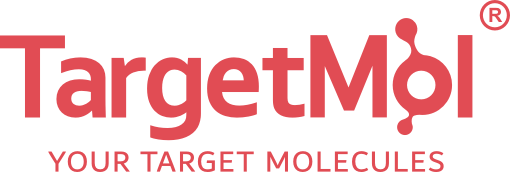


 |
|